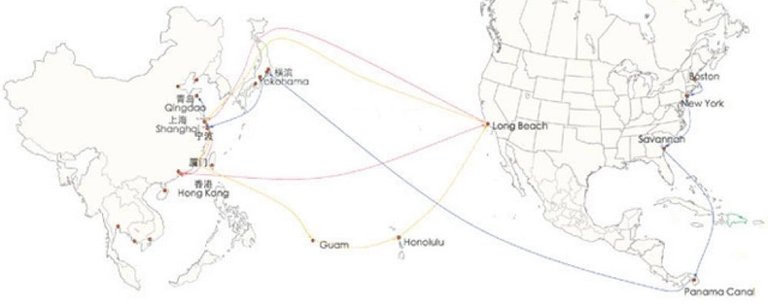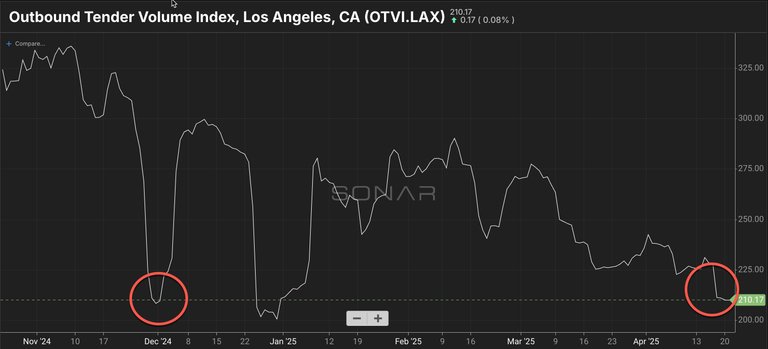First, a timeline of when the tariffs came into force:
On April 2nd, "Liberation Day", a range of tariffs were announced, from 10% on the UK and Australia, 20% on the EU to 50% on tiny Lesotho. But additional tariffs announced on China took their total to 84%.
On April 9th, Trump rolled back all the tariffs to 10% for 90 days, apart from China, whose tariffs were increased to 145% in retaliation for their retaliation.
On April 10th, China retaliated again, banning the export of rare earths to the US. All trade between the US and China came to a halt.
On April 14th, after being lobbied by Apple's Tim Cook, Trump exempted electronics including smartphones and laptops from tariffs.
Here are the shipping routes from China to the USA:
It takes 25 to 30 days for goods from China to arrive at the port of Los Angeles. It's 45 days to Chicago in total (sea plus train or truck journey from LA to Chicago. It takes 55 days to New York from China via the Panama Canal.
The goods arriving in Los Angeles this week are the ones that sailed between April 2nd and April 10th. The volumes were down because of the 84% tariff.
As you can see from the following graph, this is already affecting trucking, as they have fewer goods to distribute:
They're down to Thanksgiving and Christmas levels when everyone is on holiday.
Next week Los Angeles will experience the impact of the near zero trade with China (apart from electronics). The port employees and truckers will experience lay-offs.
New York will experience it two weeks later.
Businesses tried to protect themselves with massive orders in February and March to fill their warehouses. How long that inventory lasts is anyone's guess.
Small businesses would not have had the capital or loans to build up a lot of inventory. Large businesses will have built up several months worth.
There is no sign that China is talking to the Trump administration to resolve this.
So the American consumer will see the impact in stores in the second half of May.
The Federal Reserve will next meet on May 6th and 7th. They might have data from the western part of the US by then, and will have an idea of how it is impacting prices.


